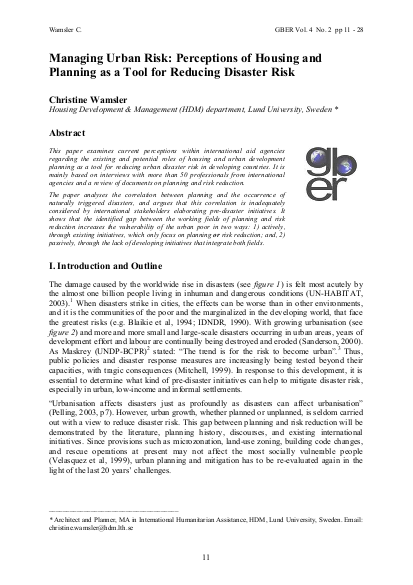
This paper examines current perceptions within international aid agencies regarding the existing and potential roles of housing and urban development planning as a tool for reducing urban disaster risk in developing countries. It is mainly based on interviews with more than 50 professionals from international agencies and a review of documents on planning and risk reduction. The paper analyses the correlation between planning and the occurrence of naturally triggered disasters, and argues that this correlation is inadequately considered by international stakeholders elaborating pre-disaster initiatives. It shows that the identified gap between the working fields of planning and risk reduction increases the vulnerability of the urban poor in two ways: 1) actively, through existing initiatives, which only focus on planning or risk reduction; and, 2) passively, through the lack of developing initiatives that integrate both fields.
